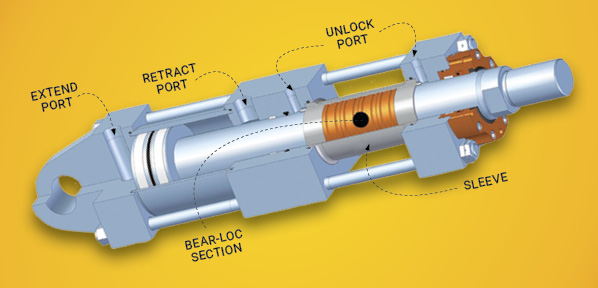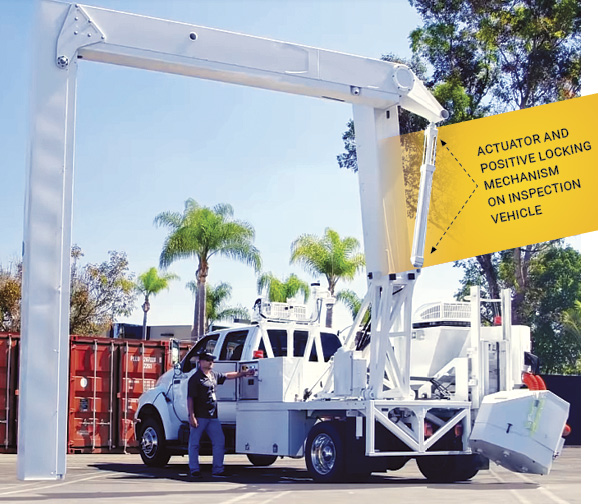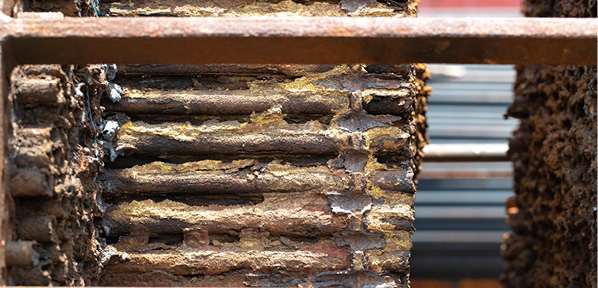Powerful Productivity and Safety: Positive Hydraulic Locking Systems and Actuators
By Robert J. Tafel, Engineering Manager, York Precision Machining & Hydraulics LLC
U.S. employers want productivity and safety for both their operators and equipment, and the data clearly underscore the need for safety. In 2017, according to the U.S. Bureau of Labor Statistics’ most recent report, an estimated 2.8 million nonfatal workplace injuries and illnesses were reported by private industry employers. That’s 2.8 cases per 100 full-time workers.
Tragically, 5,147 fatal work injuries occurred in 2017 in the U.S. Workers struck by equipment is a chief cause of injuries and accounted for 695 deaths. According to the latest Liberty Mutual Workplace Safety Index, the total cost of all disabling workplace injuries was $59.9 billion. Of course, the cost is incalculable when it comes to lost human life.
If positive hydraulic locking systems and actuators had middle names, they would be “Productivity” and “Safety.” In this article, we’ll explore the distinctive features of positive hydraulic locking systems and actuators, as well as their unique capabilities.
How does a hydraulic actuator work?
A hydraulic actuator is a cylinder or fluid motor that uses hydraulic power to control or move a mechanical device or system with either linear or rotary motion. It requires a directional control signal from a valve, and a hydraulic source of energy. Since fluid pressure is highly non-compressible, it can be transmitted instantly and can hold force or torque constant without needing more fluid or pressure. It is especially effective for large forces and high speeds.

Hydraulic locking systems
Typical locking systems lock when power is applied
Hydraulic cylinders use liquid as their energy source, which is non-compressible. There are two main types of cylinders: spring or gravity return (with liquid on one side of a piston, and a spring or weight supplying energy on the other), or double-acting (liquid on both sides, one side with higher pressure to actuate the valve, opening or closing it).
Hydraulic locking cylinders typically have emergency stop or “e-stop” features designed to go into effect when power is lost. These locking systems can feature a mechanical lock manually set at a particular location along a rod, or an automatic locking feature, or both.
Static applications (during loss of power, the lock prevents machinery from falling on operators and equipment): In some locking systems, when the pressure is cut, a piston rod passes through a cartridge and internal springs push on an over-the-center mechanism to lock the piston. The mechanism clamps the piston rod, holding the cylinder.
Dynamic applications (stopping the movement of machinery): In spring-loaded locking devices, the spring’s release allows movement of a piston. Piston displacement in turn allows clamping into a locked position.
These types of rod locking cylinders are best used as a back-up for safety. And they come with a warning: If the piston rod is not stationary before the rod lock unit is engaged, the clamping mechanism can be worn down and not function properly the next time.
Solutions to these challenges can be found in the use of hydraulic power with a positive locking system.
Positive locking systems lock when power is lost: How positive locking systems work
A positive locking system locks when power is lost. The system is designed not to work loose in vibration. Some positive locking systems may use a wedge or other clamping feature to achieve the positive lock. Most use a form of physical barrier to achieve a stop or locking action, which usually requires some motion to achieve the stop. This can be problematic for some applications.
Some locking cylinders can lock anywhere along rod length. While some locking cylinders can hold the load in two directions.
The engineers at York Precision Machinery & Hydraulics saw the need for a positive locking system that combines all of these features. They developed and patented a different positive locking system that locks instantly and automatically when pressure is removed. Whether pressure is removed on command or accidentally lost, this positive locking device engages automatically: no movement, no moving parts, no need for operator intervention. The system is called the Bear-Loc®.
Story of the Bear-Loc®
The Bear-Loc was developed in response to manufacturers’ need for a fail-safe locking device that could hold position indefinitely and have infinite position as well as bi-directional locking. Its designers discovered an innovative way to minimize moving parts and create a fail-safe locking system that also offers zero backlash, high system stiffness (if required), and “design to your needs” versatility.
The design is based on the principle of elastic expansion of metal under pressure. It is comprised of a rod and liners enclosed in a sleeve, which forms an interference fit with the outside diameter of the rod. With no sleeve pressure, this interference automatically provides a positive mechanical connection to lock the rod in any phase of the stroke. Motion is impossible in any direction when the Bear-Loc is operated within its rated capacity. As soon as hydraulic pressure is applied, the sleeve expands radially, removing the interference and creating enough clearance for the rod to be stroked with minimal resistance. Load capacities are determined by three factors: diameter of the rod, amount of pressure used to release the lock, and length of the lock.
Applications that benefit from positive locking
Virtually any application that requires linear force can benefit from the use of a hydraulic cylinder system, and its strength and efficiency are unmatched by any other system. For example, a Bear-Loc and actuator can have pulling or holding power up to 4 million pounds and an operating pressure of up to 5,000 psi. Standing or static applications can range from presses that do injection molding or forging to compactors to testing such as fatigue and flight or aerodynamic simulation. Mobile applications can include inspection vehicles, construction and mining equipment, and more.
To better understand the power and safety features of the positive locking system, let’s look at a few case studies with varying conditions below.
Inspection vehicles: actuator + Bear-Loc positive locking system
From the Super Bowl to the nation’s borders, inspection vehicles are in demand. You’ve probably seen them—maybe even been a passenger—as the x-ray toting mechanical arm of an inspection vehicle passes over other vehicles of all shapes and sizes. Inspection vehicles obviously serve areas where security is a critical need. Chances are the hydraulic actuator that safely lifts and locks the inspecting arm is a York Precision actuator and Bear-Loc.
In preparation for the 2019 Super Bowl LIII in Atlanta, Customs and Border Protection (CBP), a division of Homeland Security, actively scanned all vehicles entering the stadium. The York Precision hydraulic actuator moved the inspection arm, and the Bear-Loc assured that the inspection arm did not drop, protecting both persons and vehicles, and allowing the inspection vehicle to successfully complete its mission.

Hydraulic Press: Bear-Loc positive locking system
The presses in plastics injection molding machines produce the vinyl parts of the vehicles we all drive.
Tragedy strikes if a press brake fails because it can crush and kill its operator. If a press brake relies on hydraulic pressure to remain locked, loss of pressure represents a life-threatening danger. Safety issues with this mission-critical manufacturing process can mean costly fines, perhaps even close down operations.
That could never happen with the Bear-Loc positive locking system because it locks when pressure is removed. Whether pressure is lost on command or by accident, the Bear-Loc engages automatically, providing a reliable, positive, fail-safe lock. Workers can safely operate and maintain the presses.
Automotive crash test wall: Bear-Loc positive locking system
It’s a scene nobody ever wants to see: a fully loaded 80,000-pound tractor trailer hurtling straight at you and your vehicle.
With its crash test wall, a leading U.S. automaker recreates the scene using crash dummies. Their rigorous vehicle testing saves countless lives. Of course, the effectiveness of the test requires that the crash wall doesn’t budge. What keeps the crash wall from moving? York Precision’s Bear-Locs.
Four Bear-Locs were installed 30 years ago. Recently, the customer purchased a fifth Bear-Loc to serve as a “round Robin” unit to further extend product life. We asked the lead engineer to explain: Why Bear Locs? “The need was for large holding power. We also like Bear-Locs’ fail-safe reliability. The infinitely variable position makes it easy to adapt to different projects. The moveable section of the wall has 90° impact and can turn 30° in either direction, then lock into place.” He adds that the original engineering team who specified the locks, likely chose Bear-Locs over mechanical pinning.
A Decision Matrix for Positive Hydraulic Locking Systems/Actuators
 Hydraulic actuators tend to be more expensive than other systems. Given its design versatility and features, York Precision’s positive locking system is no exception.
Hydraulic actuators tend to be more expensive than other systems. Given its design versatility and features, York Precision’s positive locking system is no exception.
Be sure to check the capabilities of any locking system you consider. Here is a decision matrix that will help you identify what system advantages your application requires.






